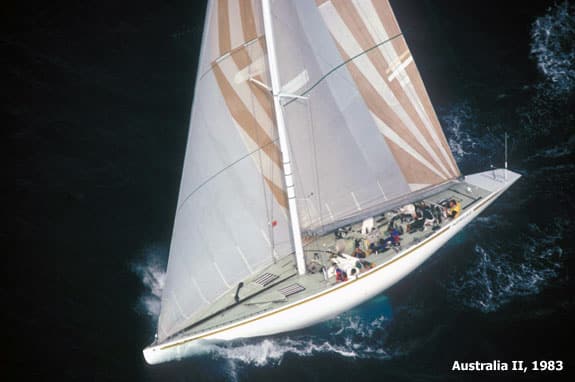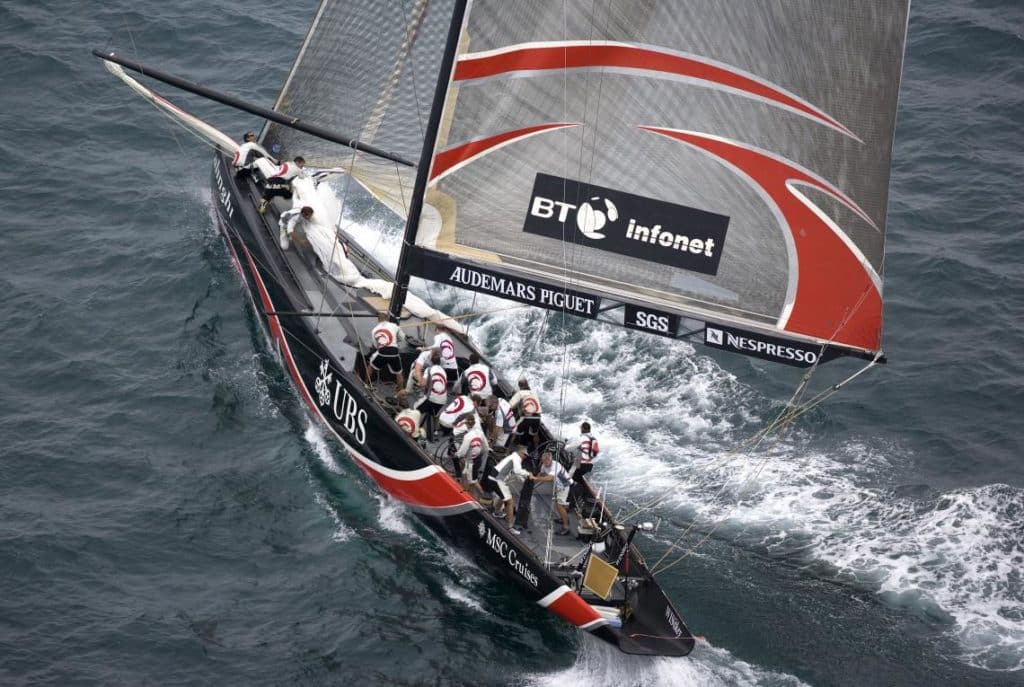Two iconic monohulls, the 12-Meter and the International America’s Cup Class set the stage for the final first-round showdown of America’s Cup Classes. The 12-Meters, a classic Cup class that defined racing for 30 years, and the high-performance, exiting offshore racing that the IACC brought to the cup in the 2000s.
12-Meter

With the mighty J-Class yachts stretching the economic realities of challengers in the 1950s, and a dry spell of nearly 20 years of no attempts to win the Cup, New York Yacht Club sought a new class to redefine America’s Cup Racing. The result? An instant classic.
In 1956 Henry Sears led an effort to bring the 12-metre class yachts to the forefront. The class gave freedom to designers, setting restrictions only on the sum of the yacht’s measurements. Sail area, length overall, waterline length and beam were all taken into account and weighted under the 12-Meter rule to ensure competitive racing. The 12-Meters ranged from 65-75 feet and typically sported 80+ foot rigs. The difference in performance was minimized by the design rule, but not so much as to take away the importance of design as a major component of America’s Cup Racing.
What ensued was a battle of design that led to one of the most daring design moments in the history of the sport. After the first post-war challenge in 1958, Australian teams launched a series of challenges over the course of 20 years, trying in vain to take the Auld Mug down-under. They were unsuccessful, until 1983, when Australia II would send waves through the sport. Shrouded in secrecy, the Australian yacht did the unthinkable, and dethroned the Americans to win the America’s Cup. The shocking upset after more than 100 years of unbroken American rule was thanks in no small part to the ground-breaking wing keel on the 12-Meter.
The final showdown in the 12-meter class however, would see the Cup back in the hands of the American’s when Stars & Stripes defeated Kookaburra III in Fremantle in 1987.
Notable Yachts: Australia II, Stars & Stripes, Weatherly, Intrepid, Columbia.
vs.
International America’s Cup Class

In the wake of the controversy over the Mercury Bay Challenge in 1988, a new rule was put into place. The International America’s Cup Class (IACC) was introduced to replace the 12-metre class after its 30 year stint as the preferred design. The new yachts aimed to preserve the heritage of the 12-meter by establishing restrictions that would place equal weight on yacht design and seamanship skills.
The first challenge saw an Italian team, Il Moro di Venezia take on Bill Koch and Buddy Melges’ America3. The Americans one again triumphed, but their victory was short lived. Russel Coutts quickly mounted a challenge from Royal New Zealand Yacht Squadron and handily defeated Dennis Conner 5-0 with his uncannily fast “Black Magic.”
The IACC would bring about a series of Cup changes of hand. While the American’s successfully defended the first challenge, New Zealand, held the trophy for several years. In 1999, another America’s Cup milestone was hit, when for the first time in the event’s history, the trophy was contested without an American challenger or defender in the finals.
In 2003, a host of strong challengers battled for the right to challenge the Cup in Auckland during the challenger selection series. The Swiss syndicate, Alinghi, having poached New Zealand sailors to aid their challenge, defeated the Louis Vuitton Cup trials and in turn took the America’s Cup 5–0 for the Swiss. Alinghi became the first European team in 152 years to win the trophy. Alinghi would go on to defend the cup again in 2007 against BMW Oracle.
Notable Yachts: SUI-100, SUI-64, “Black Magic, America3









